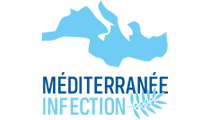Team leaders
- Bernard LA SCOLA
Team Members
- COLSON Philippe
- MOAL Valérie
- GEROLAMI René
- BORENTIN Patrick
- AHERFI Sarah
- TAMALET Catherine
- CASSIR Nadim
- BOU KHALIL Jacques
Scientific strategy and projects
1 Strategy and methodology
Two main methodological axes will be used to achieve the scientific objectives developed above: NGS and culturomics.
1.1 NGS and metagenomics
For the experimental part, we will rely on the methodology that we have previously developed and tested (Popgeorgiev et al., 2013a, Temmam et al., 2015). Sequencing banks will be prepared with the NextEra XT protocol and index NextEra kit (Illumina, USA) and sequenced on a MiSeq platform (Illumina) using the kit v3, 600 cycles. The sequences obtained (25 million reads, 15Gb of data) will be quality checked and trimmed to remove any potential residual human genomic sequences. The remaining sequences will be directly annotated by comparison (BLASTx) to a protein sequences database from known organisms using DIAMOND and the results will be visualized with MEGAN. This step will quickly detect viral sequences coding for similar protein sequences in a known reference genomes. Sequences will then be assembled in longer genomic fragments (contigs) and again annotated (BLASTp). Genes of interest in the consensus sequences will be used to design specific primers and probes for quantitative (RT)-PCR and fluorescent in-situ hybridization (FISH). These primers and probes will be tested on the original samples. For tissues, fluorescence in situ hybridization will be performed on biopsies embedded in paraffin, cut into thin sections and deposited onto glass slides. Biological fluids will be fixed in 4% formol and first embedded in sterile agarose before paraffin. Cells will be cytospined directly onto glass slides. Probe labeling, hybridization and detection will use the DIG system (Roche Diagnostics). Signal will be observed using a Leica SP5 confocal microscope.
1.2 Viral culturomics
The basis of culturomic approach was first developed to study bacterial digestive microbiota. It consists to provide hundreds of culture conditions to explore the bacterial diversity (Lagier et al. 2012). Beside studying bacterial diversity it allows to discover new pathogen that are later explored specifically using classical approaches combining culture and molecular detection (Cassir et al, 2015). This methodology was shown to be complementary of metagenomics as it allows to isolate minoritary flora that are masked by dominant flora (i.e. E. coli and bacterial phages in digestive microbiota). In the current project we intend to develop the culturomic approach to viruses. For this we are currently developing a high throughput system allowing detection of viruses on 96 well microplates. Samples are prepared for inoculation through filtration (for small viruses) or not (for giant viruses) through 0.2μm pore-sized filters. Microplates are seeded with different cell support and inoculated with samples (with antibiotics for non filtered samples). The particularity of this approach is to prepare a least 10 microplates with different cell support each. For human microbiota or human samples, we will inoculate 10 different cell lines supposed to be representative of the more virus permissive cells. For some human and all environmental samples we will inoculate 10 different protozoa supports to search for giant viruses as we demonstrated previously that multiplication of support increases the diversity of isolated viruses. Detection of virus growth will be detected using flow cytometry (FC) as published previously (BouKhalil et al 2016). For giant viruses, preliminary characterization will be done also by FC and mixtures will be separated by using sorting (BouKhalil et al, submitted manuscript). For small viruses, cell lysis will be detected by FC then explored by negative staining transmission electronic microscopy. All these procedures have been adapted in the laboratory these last months. The unique issue that needs to be resolved will be the case on non-lytic viruses. We intend to detect it by using aggregation and nucleic acid staining followed by FC but other strategies could be developed.
1.3 Combined strategy
In case of human samples where a new virus could be detected by the mean of viral metagenomics viral culturomics using the largest possible panel of cell support will be applied in order to isolate the detected virus.
2 Origin of studied samples
Two main viromes/microbiota will be studied by the team.
2.1 Human virome/microbiota
In this part, we will search for new virus (or variants) or modified microbiota in case of idiopathic or not well characterized human pathologies with a suspected infectious etiological agent. Apart from acute infections, we also plan to search forviruses/bacteria that cause latent, or persistent infections. A particular emphasis will be brought on the study the role of co-infections in pathology, the relationship with the host (immune/genetic status) and the environment. We will both work on specific cohorts detailed below and on specific clinical cases addressed to our laboratory. This research axis relies on several local, national and international collaborations.
2.1.1 Fecal microbiota
To date, study of fecal viral microbiota has been done using viral metagenomics only. All the studies have detected plant viruses associated with food and bacterial phages. If the role of plant virus needs to be determined, as we identified that some of it Pepper mild mottle virus (PMMoV) could be associated with fever, abdominal pains and pruritus, we believe that viruses with multiplication in digestive mucosa or excreted in feces and potentially pathogenic for human could have been missed. For small viruses, we plan to test approximately 500 stool samples on 10 different cell supports. For giant viruses, we have to date tested 500 samples on 3 protozoa supports and could isolate 10 giant viruses (unpublished data). As for plant viruses we believe that hey are only transient microbiota but their role need to be investigated.
2.1.2 Necrotizing enterocolitis
In previous work, we have demonstrated that, at least in southern France, beside lowered bacterial diversity, C. butyricum is significantly associated with necrotizing enterocolitis (NEC). Based on WGS of several strains, we also observed that strains associated with NEC corresponded to 3 clones different from those isolated from human feces or environment (submitted manuscript). Viral metagenomics was performed on 15 stools form NEC and 15 from controls but nothing was specific to NEC and only bacterial phages were detected. In a new prospective study involving 5 neonates units (Marseille, Nîmes, Nice, Lausanne, Genève) we intend to increase the number stool samples from NEC and controls and to perform longitudinal study (with Nîmes neonates ward) to investigate if colonization by C. butyricum is predictive of NEC. If it is the case,this would open the way to prevention using targeted microbiota modification. The role of recently proposed etiological agents (C. neonatale et uropathogenic E. coli) will be also investigated.
2.1.3 Immunocompromised
In this project we will search for the presence of new and emerging viruses in kidney/liver transplant recipients. We are ollowing-up in Marseille two very large cohorts of such individuals, among the largest at least at our country scale. Thus, on the one hand, 2700 HIV-infected patients are followed-up by clinical and virological teams that are part of the IHU Méditerranée infection. On the other hand, about 1500 kidney transplant recipients are followed-up in our institution by the team of Pr. Y. Berland and Dr. V. Moal who is part from our team 4. Due to HIV-related immunosuppression, HIV-infected patients are more proned to various infections and their persistence than immunocompetent individuals. They are also particularly exposed to infectious agents through sexual vaginal or anal intercourse and injection drug use. Among kidney transplant recipients, anti-infective regimens make immunosuppressive therapies safer, but they do not completely prevent the occurrence or increased severity of infectious diseases. Thus, infections remain an important concern and constitute the secondleading cause of mortality. Viruses are the most important cause of infections and represent a major source of morbidity and mortality. Furthermore, kidney transplant recipients may acquire viral infections through exogenous routes, including community exposure, the donor organ, and blood products or by endogenous reactivation of latent viruses. Virus-associated diseases may manifest as direct illness or indirect effects mediated by immunomodulation, and viruses will more fully display their potential dangerousness in kidney transplant recipients than in immune-competent individuals. The other studied group of patients will be patient with hepatocarcima and cirrhosis, especially relationship betwenn digestice microbiota andcirrhosis associated encephalitis.
2.2. Giant viruses in the environment
As we did the past ten years, we will continue our search of new giant viruses using high throughput isolation on microplates with detection using flow cytometry. The originality in the future will be multiplication of Protozoa supports, using some special” amoeba resistant to the most common viruses such as Mimivirus and Marseillevirus. Our protocol will include at least ten protozoa support that were not previously used for this purpose such as the amoeba Saccamoeba sp., Willaertia sp., Naegleria sp., Walkhampfia sp. but also ciliates and flagellates such as Tetrahymena pyriformis or Poteriochromonas sp. we
believe that this approach will help us to increase the repertoire of giant viruses.
3 Specific questions that need to be addressed
3.1 Characterization of the most recent giant virus isolates
During the most recent past years, we have isolated several new putative families of viruses (Faustoviruses, Kaumoebavirus, Pacmanvirus, Yasminevirus, Cedratvirus, Orpheovirus, Tupavirus). The genomes of all these viruses have been sequenced but there is a need for an extensive and precise characterization, and we have several original questions regarding some of these viruses and tentatively unraveled issues. For the group Faustovirus we have identified that the gene of the capsid contains a large number of introns and exons and that the capsid is composed of two layers of proteins, a unique feature in the viral world. We are currently trying to understand the splicing mechanism of the pre-mRNA and to identify the gene that code for the inner protein layer. We will compare the structure of the Faustovirus capsid to that of the most closely related viruses: kaumoebavirus, whose capsid gene is composed by a smaller number of exons, and pacmanvirus, whose capsid encoding gene
does not contain introns. This work will be done using cryo-electronic microscopy with the group of M. Rossmann (Perdue
University).
3.2 Investigations of systems involved in competition between virophages, giant viruses, amoeba and bacteria
In spite in intracellular location, giant viruses are not in an allopatric environment. Within the cytoplasm of amoeba there is competition between giant viruses, virophages (Slimani et al 2013), other bacteria. After the discovery of Mimivire, a crispr-like system of defense for giant viruses against virophages (Levaseur et al 2016), we intend to search if giant viruses could produce antibacterial compounds that could regulate growth of bacteria and if intra-amoeba bacteria could produce antiviral compounds that could regulate growth of giant viruses. We performed preliminary tests and observed that lysates of amoeba containing giant virus factories are able to inhibit growth of some bacteria. We are currently trying to identify these bacterial agents. We will also do the opposite by using extract from intracellular bacteria on giant viruses-amoeba co-cultures to search for production of antiviral compounds. We are also searching to discover systems that allow to some amoeba to resist specifically to several giant viruses.
3.3 Search for toxin of C. butyricum
We have previously identified that the supernantant of C. butyricum culture was cytotoxic for cells, especially intestinal cells such as caco-2. By using the xCELLigence system (ozyme, France) we will test different fractions to identify the compound we suspect to be a protein toxin. The identification and then expression of this toxin and associated antibodies may help to develop a diagnostic test to be used in neonates stools.
Viral metagenomics, high throughput isolation of viruses, cell culture, giant viruses, microbiota, necrotizing enterocolitis
Guillaume Blanc, Aix Marseille Université
Tu Anh TRAN, Massimo DI MAIO, Jean-Philippe Lavigne, Université de Nîmes
Florence Casagrande, Raymond Ruimy, Université de Nice
Mickael Rossmann, Perdue University, USA
Mathias Fischer, Max Plank Intitute for medical research, Hidelberg, Germany
Jonatas Abrahao, Universidade Federal de Minas Gerais, Belo Horizonte, Brazil
Alexander Culley, Université Laval/Pavillon Charles-Eugène Marchand, Canada
Benjamin Tully, Elaina Graham, University of Southern California, Los Angeles, USA
Frederik Schulz, Tanja Woyke, U.S. Department of Energy Joint Genome Institute, Walnet Creek, USA






